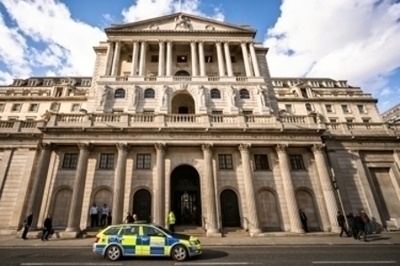Peter Warburton – February 11, 2021
The House of Lords Economic Affairs Committee recently launched a wide-ranging inquiry into the Bank’s ever-expanding Asset Purchase Programme, otherwise known as QE. This inquiry is long overdue, and my hope is that it will expose the fragility of the premise on which the Bank has acted since it resumed QE in 2016. The official justification for QE has mutated repeatedly since its inception in 2009, rather like the coronavirus. The most recent formulation is that additional QE is necessary to enable the Bank to hit its inflation target, which is currently undershot in terms of the preferred CPI measure. Yet the failure to unwind any of the previous bouts of QE breeds a deep suspicion that QE is part of a covert and unsanctioned strategy of financial repression.
At the heart of the debate over QE is the mingling of monetary and fiscal policy: central bank asset purchases can only happen with the permission of the ministry of finance, in this case the UK Treasury. Whereas the Bank’s Monetary Policy Committee can adjust Bank Rate and the Financial Policy Committee can alter the countercyclical capital buffer independently of the Treasury, the Bank does not have the authority to make additional asset purchases without prior consultation. This is because the assets purchased – predominantly gilts – may lose value after purchase and burden the Bank with capital losses. As the Bank cannot issue its own debt or equity, it has no means to recapitalise itself. Its potential losses must be underwritten by the Exchequer. While the Bank has the option of allowing its holdings to run to maturity, and be redeemed at their par value, this does not mean that losses will never be crystalised. In the circumstances of today’s ultra-low yields, the Bank has made significant gilt purchases at prices above par.
The advent of QE in 2009 effectively blew apart the ‘full funding rule’ on which the Bank of England’s independence was constructed in 1997. Whenever the Bank undertakes net purchases of gilts, it adds to the public sector contribution to the (M4) money supply. QE is equivalent to under-funding the budget deficit; QT (quantitative tightening) is equivalent to over-funding it. Since the Asset Purchase Programme (APP) was revived in March 2020, the budget deficit has been massively underfunded in terms of the supply of gilts required to be absorbed by the domestic private and overseas sectors. When the second lockdown was imposed in October 2020, with dire fiscal consequences, the Bank gamely weighed in with another £150bn QE extension, taking the outer limit to £895bn (figure 1).
It is assumed that the Bank has some formula that determines how much QE is appropriate to achieve a particular degree of macroeconomic boost, yet no estimates have been forthcoming. On what basis does the Bank justify its latest intervention? How much of a benefit to GDP does it expect? How much of a lift to the price level? By how much will it inflate average house prices? What is its quantitative impact on financial asset prices? The Bank is silent. We are left to infer that the Bank’s real justification for QE is to finance the budget deficit in its entirety (figure 2) and to repress gilt yields as far as possible and for as long as possible.
Let us hope that the House of Lords inquiry (figure 3) exposes the Bank’s threadbare excuses for its recent actions (figure 4) and calls the MPC to account.
Figure 1
Source: Bank of England
Figure 2
Source: Bank of England
Figure 3: The questions posed in the House of Lords inquiry
- Has the expansion of the Bank of England’s Quantitative Easing programme undermined the independence of the Bank, or the perception of its independence? What are the implications of this?
- How well has the Bank of England communicated its decisions on Quantitative Easing? Is the programme transparent enough?
- Should the Bank of England’s mandate be altered?
- How should Quantitative Easing be defined?
- What were the original objectives of Quantitative Easing and have they changed?
- Has Quantitative Easing been successful and how should success be measured?
- What trade-offs does the Bank of England’s Quantitative Easing programme entail? What effect might it have on inflation?
- What have been its distributional effects?
- How does the Bank of England’s Quantitative Easing programme compare to other programmes internationally?
- Could the expansion of Quantitative Easing in the UK create the possibility of economic stability being undermined in the future? If so, how?
- What evidence is there for any upper limits to the Bank of England’s Quantitative Easing programme?
- Will Quantitative Easing be unwound in full, and if so how? Is it likely that the Bank of England’s balance sheet will be permanently, and structurally, larger going forwards?
Figure 4 : TheBank’s layman’s guide to “How does quantative easing work?”
Large-scale purchases of government bonds lower the interest rates or ‘yields’ on those bonds. This pushes down on the interest rates offered on loans (e.g. mortgages or business loans) because rates on government bonds tend to affect other interest rates in the economy. So, QE works by making it cheaper for households and businesses to borrow money – encouraging spending. In addition, QE can stimulate the economy by boosting a wide range of financial asset prices.
Suppose we buy £1 million of government bonds from a pension fund. In place of the bonds, the pension fund now has £1 million in money. Rather than hold on to this money, it might invest it in financial assets, such as shares, that give it a higher return. And when demand for financial assets is high, with more people wanting to buy them, the value of these assets increases. This makes businesses and households holding shares wealthier – making them more likely to spend more, boosting economic activity.

